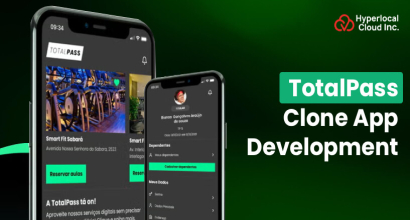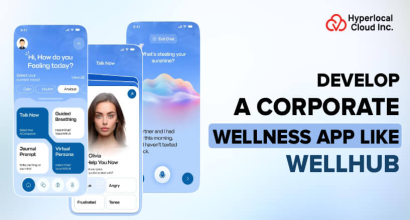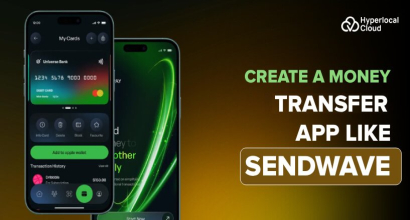The insurance industry has undergone a rapid digital change over the years. Traditional insurance procedures, which once depended a lot on paperwork and interaction in practice, are now replaced by advanced digital tools. Since more people are becoming comfortable using digital solutions in everyday life, the demand for user-friendly and quick insurance services increases.
Customers today hope that their insurance provider will offer online requirements, policy updates, immediate quotes, and further communication through digital channels. This change in customer behavior has pushed insurance companies to modernize operations by using innovative and scalable digital insurance solutions.
The white label insurance management software has proven to be a very effective solution for startups or entrepreneurs who are looking to proceed with their business journey at an affordable price. This allows businesses to build their own insurance management app quickly without the need to develop everything from scratch. This not only saves time and resources but also ensures that the company takes an impactful approach in the digital marketplace.
What Is an Insurance Management App?
An insurance management app is a digital tool designed to help individuals or businesses manage their insurance policies, claims, and related documents in one place. These apps offer features such as policy tracking, premium payment reminders, claim filing, renewal alerts, and secure storage of insurance documents. Many also provide access to customer support, policy comparisons, and updates on new insurance products. By centralizing insurance-related tasks, these apps save time, reduce paperwork, and improve policy management efficiency. Whether for health, life, vehicle, or business insurance, an insurance management app ensures users stay organized, informed, and in control of their coverage anytime, anywhere.
Launch Your Own Insurance Management Software
How Does Insurance Management Software Work?
Insurance management software is designed to automate and simplify various tasks involved in the supply and management of insurance products. It provides a centralized dashboard for the insurance companies to offer customers a practical interface to get involved with their insurance.
1. User Onboarding
Customers or agents register using credentials like name, phone number, and email address. The system verifies their information and creates a profile for them.
2. Policy Management
Users can browse different insurance plans, compare plans, ask for offers, and buy coverage directly through the app.
3. Premium Calculation and Payments
The software calculates the price based on selected plans and user information. This supports several payment methods for simple transactions.
4. Claims Management
Users can submit claims, upload the necessary documents, and track the status of their requirements through a customer panel. The insurance company can process and approve requirements from the administrator's dashboard.
5. Communication and Alerts
The communication and alerts policy sends automatic reminders of renewal, payment, and new offers. It also supports direct communication through chat or a help desk.
6. Analytics and Reporting
Administrators can see a detailed report on sales, customer activity, requirements status, and other operational metrics.
The Advantages of Investing in the White Label Insurance Management Software
White label insurance management software is a clear platform that companies can adapt and brand as their own. Instead of making everything from scratch, companies can buy this software and start offering insurance services under their own names immediately. This type of software is an intelligent investment.
1. Faster Launch Time
It may take more than several months or more than one year to develop an app from scratch. With a white label solution, you can prepare your platform to start in a few weeks. This is especially useful if you want to track market trends or target your rivals.
2. Lower Development Costs
Creating a customized software platform requires a large team of developers, designers, sensors and project managers. It can be very expensive. With white label software, you avoid most of these expenses because core features have already been developed and well tested.
3. Complete Customization
Even if the features are integrated into the app, you can still adjust and customize them. You can change the logo, color, layout and even specific features. This ensures that the platform reflects your brand and provides a unique experience for your users.
4. Pre-built Compliance Features
Insurance is a highly regulated industry. There are rules on data security, customer privacy protection and financial transparency. Most white label insurance platforms have underlying compliance facilities, so you don't have to worry about breaking any laws.
5. Continuous Support and Updates
When you buy a white label software from a well-known provider, you usually receive ongoing technical assistance. The team handles updates, bug fixes and security campaigns, so you can focus more on running your business instead of maintaining software.
The Positive Impact of AI-Driven Technologies on Insurance Management Software
AI is playing an increasingly notable role in insurance technology. By utilizing smart algorithms and machine learning tools, insurance platforms can transform into more proper, organized, and innovative in their operations.
1. Automated Risk Assessment
AI can process customer data, including age, location, medical history, and driving journals, to calculate the risk and determine the insurance premium more accurately. This reduces errors and provides speed to policy approval.
2. Fraud Detection
The AI algorithm is trained to detect unusual patterns in claims. If someone tries to submit a fault or suspicious claim, the system can automatically flag it for review. This helps insurance companies save money and avoid fraud-related damage.
3. Personalized Plans and Offers
By analyzing the user behavior and preferences, AI can recommend to customers the most appropriate guidelines. This privatization increases the possibility of sales and improves customer satisfaction.
4. Customer Support with Chatbots
AI-operated chatbots can answer general questions, guide users through the app, and even help them submit claims. They are available 24 hours a day, with support that is more efficient and accessible.
5. Predictive Analytics for Better Decisions
AI technologies can predict trends, such as future demand rates or customer behaviour, based on historical data. This allows insurance companies to plan their strategies effectively and adapt to new challenges.
Talk to Our Experts and Discover the Perfect White Label Fit for Your Business
Explore the Emerging Core Features of an Insurance Management App
An insurance management app comes with a wide range of features and functionalities that facilitate the admin, agent, and customer panels. Just have a look at the information below to understand more about the core features of a digital insurance management app.
Admin Panel
1. Admin Dashboard
The total number of users, active guidelines, and the data, including income benefit and system health, come under the admin dashboard. This scene helps snapshot administrators monitor the stage in an instant.
2. User Management
Administrators can add, edit, or deactivate users, including customers, agents, and sub-managers. Each user can be assigned specific roles and permissions.
3. Policy Management
This facility allows administrators to create and manage various insurance, including health, life, car, and real estate insurance. Policy details, such as coverage amounts, duration, and premium prices, can be adjusted as needed.
4. Claims Monitoring and Approval
Administrators can review the requirements presented by customers, confirm the attached documents, and may approve or reject claims in accordance with the company's guidelines. This section often includes filters that help handle the requirements based on category, urgency, or date of event.
5. Reports and Analytics
The forum will generate detailed reports related to sales, claims, customer behavior, policy performance, and income growth. These analyzes enable informed strategic decisions.
6. Notification Center
A centralized system for sending messages, payment or service updates to customers and agents.
7. Configuration Settings
The administrator can customize platform settings, including tax rate, language preferences, currency format and conformity configuration.
Agent Panel
1. Lead Management System
Allows agents to track and manage their leads. Each lead can be categorized based on interest, contact status, and conversion potential.
2. Quotation Generator
Agents can provide customers with quick, premium quotations based on selected policies and risk factors.
3. Customer Portfolio
This feature gives agents access to the details of their assigned customers, including policy status, claims history, and renewal dates.
4. Commission Tracker
Agents can view their commissions earned from sales. The tracker shows detailed earnings reports and payment schedules.
5. Document Submission and Verification
Agents can upload and verify customer documents, including ID proofs, address verification, and income details.
6. Communication Tools
Chat, email, or ticket-based systems enable agents to communicate directly with customers and request support from administrators.
Customer Panel
1. Policy Search and Purchase
Customers can look through ready insurance blueprints, compare attributes, and acquire policies directly from the app.
2. Policy Dashboard
Shows operational policies, policy numbers, premium amounts, expiration dates, and coverage elements.
3. Premium Payments
The primary feature of payment gateways is to facilitate seamless premium payments using cards, bank transfers, wallets, or UPI.
4. Claim Filing and Tracking
A step-by-step form helps customers file claims. They can combine basic documents and monitor the approval status in a timely manner.
5. Renewal Reminders
The app sends digitized alerts preceding the policy's expiration, helping customers renew on time and ignore lapses in coverage.
6. Help and Support Center
Includes frequently asked questions, live chat, reserve tickets, and possibly a chatbot to resolve the user's queries immediately.
7. Profile Management
Allows users to update personal information, view payment history, and manage login credentials.
Steps to Build a Digital Insurance App
There are several factors that play a vital role in the development of an insurance management app. From a proper research phase to a quick implementation, everything is included in the development phase. Below you will get a step-by-step guide that lets you know about the development with clarity.
1. Conduct Detailed Market Research
Before you start building an insurance management application, you can take the time to research your target audience. Understand what kind of insurance services they need, with current solutions, what problems they face, and what features they expect. Research is competent to identify areas where your platform can provide a better value or user experience.
2. Define Core Features
List of the features and functionalities required for your platform. Consider all users who will reach the platforms, including customers, agents, and administrators. Decide whether your platform will focus on a specific insurance niche, such as health insurance, or offer several guidelines in different niches.
3. Design UI/UX
Collaborate with an experienced software development company with a team of skilled web designers to develop apps and set up a website. Focus on navigation, clear buttons, minimal stages, and simple individual designs that work on all devices. Wireframes and prototypes should be tested before development begins to ensure the user's satisfaction.
4. Development
Now you have to decide whether to make everything from scratch or use a white label solution to develop an insurance management app. A highly skilled development team provides complete control when developing an app, but it takes more time and costs more. A white label solution is very fast and cost-effective, as the base platform is already made. This can be adapted or customized to suit your brand, features, and language preferences.
5. Conduct Thorough Testing
Test each feature carefully in all user roles. This includes test payments, logins, requirements, document uploading, and administrative approval. Perform both manual and automatic tests to detect problems with errors or user experience. Solve all identified problems before launch.
6. Launch the App
Run a soft launch or pre-test phase with a limited audience to collect initial reactions. Use this information to improve your app. After the final update, start marketing the app and get users on board. To build a strong user base for your business, make sure to launch the application on both the Google Play Store and the Apple App Store.
The Tech Stacks Used to Build a Digital Insurance Platform
To build a reliable insurance platform, developers use a combination of technologies known as a tech stack.
| Category | Tech Stack |
| Frontend Technologies | HTML, CSS, and JavaScript
React or Angular Flutter or Swift |
| Backend Technologies | Node.js or Python Express, or Django |
| Database Systems | MongoDB and PostgreSQL |
| Cloud Hosting | AWS, Google Cloud, and Microsoft Azure |
| Security Tools | SSL encryption, two-factor authentication |
| Analytics and AI Tools | TensorFlow for AI features Google Data Studio or Power BI for business reporting |
Get Started with Your Custom-Branded Insurance Platform in Days
How to Generate Revenue from the Insurance Management App?
Transforming your insurance management app into a supportive business requires selecting a proficient revenue model. By following the monetization strategies, it will become easier for you to generate good revenue for your business. Let's have a look below:
1. Commissions on Insurance Policies
This is one of the most common ways to gain revenue. Separately, the moment a policy is sold through your platform, you take a commission from the insurance provider. You can also achieve a percentage from renewals or upgrades. For platforms working with multiple insurance providers, commissions can vary depending on the plan or volume of sales.
2. Subscription Plans
Offer your platform to independent middlemen, small insurance startups, or dealers on a subscription basis. They pay a monthly or yearly fee to use the software to manage their operations. You can establish tiered pricing models that incorporate different tiers of functions, such as:
- Basic plan with limited policies and users
- Advanced plan with custom branding
- Premium plan with analytics and automation tools
3. Selling Premium Features
Offer your platform for free or at a low cost; however, charge for modern or optional traits that attach value. Customers can pay a one-time fee or a monthly fee to unlock these details. This will typically include:
- Premium analytics
- Marketing automation tools
- Custom dashboards
- Additional storage
- Cloud backup services
4. Advertising and Affiliate Marketing
Approach additional service providers, such as vehicle inspection startups, wellness clinics, or legal advisors. Permit them to promote their services on your app through banners or referral links. You collect income based on ad opinions, clicks, or successful referrals.
5. Data Insights and Reports for Insurers
If your platform handles a notable volume of users and policies, insurers may become interested in paying for access to anonymized data wisdom. These can combine approach patterns, product popularity, and claim statistics. Ensure that any data shared complies with related legal and privacy regulations.
How much does it cost to build an Insurance Management App?
The average cost to develop an insurance management app starts from $7,000. The cost typically varies depending on your choice of development method. If you choose a white-label solution to build a digital insurance platform, it costs you less and allows for quicker deployment. However, building an insurance management platform from scratch is more expensive and takes a few months to deploy.
Additionally, some other factors like the platform choice, complexity, team expertise, team location, AI-driven technologies, UI/UX designs, timeline, and third-party integration are the main components that typically raise the development cost.
Partner with Hyperlocal Cloud
Hyperlocal Cloud is a reputed on-demand app development company with experience in mobile app development at a global level. Partnering with us will always be a proficient and wise decision for startups or businesses that want to kickstart their journey with a full-featured application. From custom app development to offering a white label solution, our team of experts provides their best to make your ideas a reality. Why are you delaying then? Reach out to our experts and contact us to start your business journey with tech advancement.
FAQs (Frequently Asked Questions)
How does white label software benefit insurance companies?
It saves time and development costs, allows rapid market entry, and enables companies to offer a branded, professional digital solution without building it from scratch.
Can I customize the software with my branding?
Yes. You can add your logo, brand colors, domain name, and other personalized elements to match your corporate identity.
Is the software cloud-based?
Most white label insurance solutions are cloud-based, allowing access from anywhere, scalability, and automatic updates.
Can it integrate with third-party systems?
Yes. It can integrate with payment gateways, CRM tools, document management systems, and external data sources.
Is it secure and compliant with regulations?
Yes. Reliable providers ensure compliance with local and international insurance regulations (e.g., GDPR, HIPAA) and offer advanced security features like encryption and role-based access.
Is it suitable for small insurance agencies?
Absolutely. White label solutions can scale for both small agencies and large enterprises.
Does it support multi-language and multi-currency options?
Yes, many solutions offer multilingual and multi-currency support for global operations.
Can the software handle different types of insurance products?
Yes. It can manage various lines of insurance, including health, auto, life, property, travel, and more.



